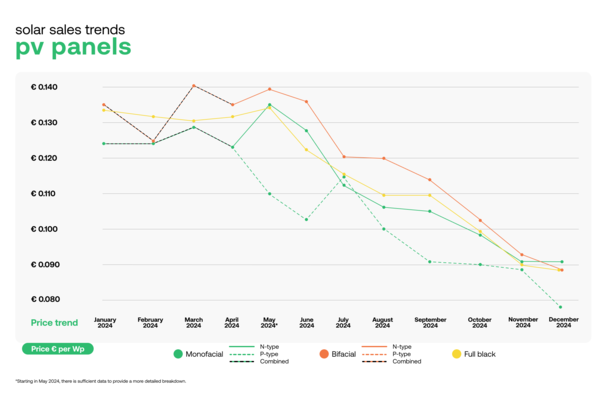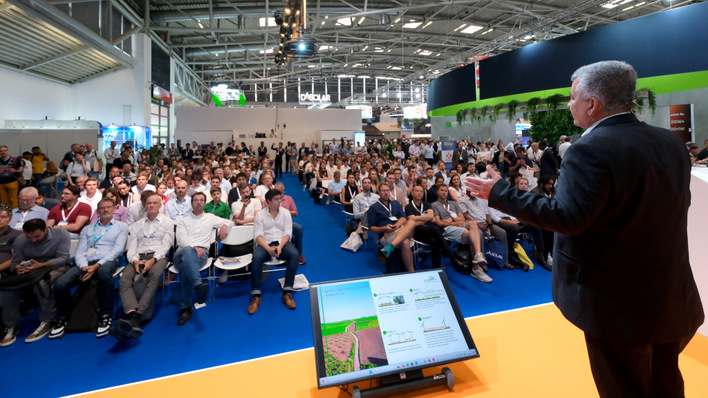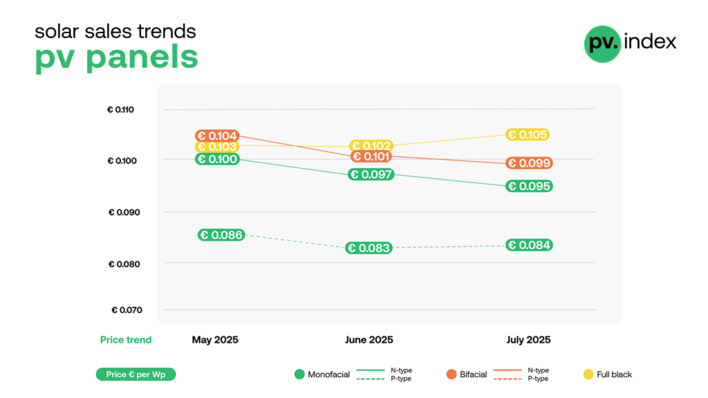Almost 17 million more European homes were powered by solar in 2023, due to a 40% growth in solar installations from 2022. Compared to the 40 GW of solar installed in 2022, 2023 brought 55.9 GW of new solar capacity across the EU27.
2023’s solar growth brought solar within a few GW of meeting the IEA target to compensate for the Russian gas shortfall. The total EU solar fleet now amounts to 263 GW, up 27% from the 207 GW in 2022.

SolarPower Europe
Germany has returned to the number one slot of Europe’s solar ranking, installing 14.1 GW in 2023, having been temporarily dethroned by Spain in 2022. Germany also now hold’s the record for the most solar installed by an EU country in one year, taking over Italy’s 12-year record of 9.3 GW in 2012. Spain (8.2 GW), Italy (4.8 GW), Poland (4.6 GW), and the Netherlands (4.1 GW) follow Germany and round out the top five EU solar markets.
Strong solar rooftop market
Driven by the lingering impact of the energy crisis, a large extent of 2023 growth stems from delayed 2022 installations. The final months of 2023 were much quieter than the start of the year. Looking toward 2024, the report forecasts slower growth, with a year-on-year increase of only 11%. This marks a departure from three years of at least 40% annual growth.The EU rooftop solar market grew by 54% year-on-year, particularly amongst commercial and industrial customers, however, the market share of utility-scale declined by 6% in 2023 for a number of reasons.

SolarPower Europe
Delayed auctions, higher grid fees, an inflationary environment, alongside permitting and grid connection issues still make life difficult for solar developers in many regions despite EU-level legislation. All combined, this means that new utility-scale solar in Europe reached 19 GW in 2023, compared to 16 GW in 2022. By comparison, rooftop solar grew from 24 GW in 2022 to 37 GW in 2023.
Difficult European PV manufacturing
The report also includes the annual stocktake of solar manufacturing in Europe. Against a European target of 30 GW of manufacturing across the supply chain, and a precarious background of bankruptcies, the picture of capacity at each step in the chain remains starkly different:
– Inverter capacity in Europe, though not part of the 30 GW target, has grown by 14% from 2022 to reach 82 GW in 2023.
- Polysilicon capacity took a hit due to bankruptcy and has declined by 12% since 2022.
- Ingot manufacturing in Europe has also faced challenges, with a temporary suspension of Europe’s remaining 1 GW of capacity in 2023.
- Wafers have potential growth by 2025 but remain limited to 1.3 GW capacity in 2023 – which has also paused production for now.
- Solar cell manufacturing has grown from 1.4 GW to 2 GW in 2023.
- Module manufacturing currently stands at around 14.6 GW, 59% higher than 2022.
Did you miss that? European PV industry against solar trade defence measures
As it stands, less than 2% of Europe’s current demand for solar could be met with European-produced solar PV. (hcn)









